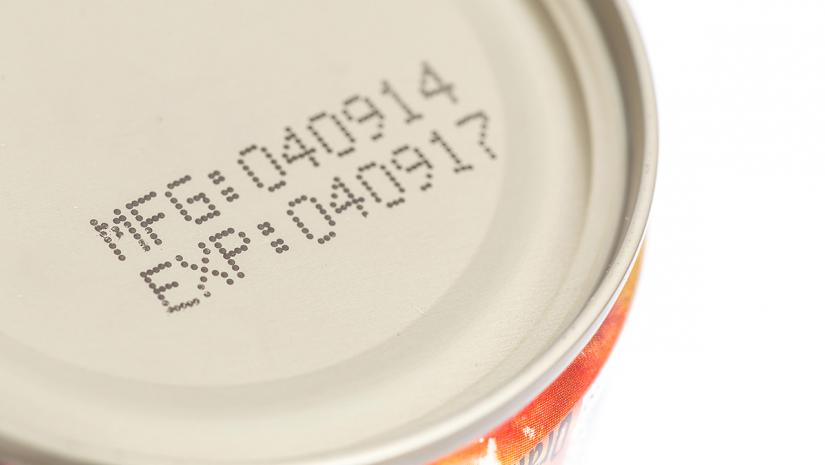EXPIRING PRODUCT FULFILLMENT
Warehouse throughput matters when it comes to the period of time customers have to use a product before it expires. Invictus Globe is able to accommodate warehouse throughput for expiring product fulfillment for a wide range of products, including those with an expiration date.
Handling warehouse throughput for expiring product fulfillment requires close attention to detail to ensure everything is shipped out and is still good for use. With a few important tips and more knowledge about the process, your business can successfully implement this practice to great effect.

Product Expiration Dates
The constant flow of inbound inventory into fulfillment centers also drives the fast pace of outbound freight loading on trucks. Handling a portion of this freight is known as expiring product fulfillment. In general terms, it is freight that has a specific date range it must be used by, or it will not be effective.
In this category, think of nutritional supplements and cosmetics that are considered expiring products. In order to make a profit and not lose any money, these goods must be shipped to customers promptly. Therefore, warehouse throughput is calculated by the number of orders that are packed and loaded for shipment. No one wants to have a load of goods destroyed because of an expiration date.
A knowledgeable staff — along with the advanced technology of a state-of-the-art warehouse management system (WMS) — ensures the items are processed efficiently. This seamless method gives customers plenty of time to enjoy the product of choice before its expiration date.
Warehouse Throughput
Warehouse throughput is the average speed at which a warehouse can fulfill orders. Besides its ability to store goods without getting damaged or spoiling, throughput in warehouse operations is judged on its throughput, overall supply chain management, and ability to help the manufacturer or wholesaler with reduced costs.
With overall logistics a multi-billion dollar industry each month, it’s crucial to partner with a throughput logistics company that will help direct some of that money your way.
Even before the inventory arrives at the warehouse, the business needs to have accurate tracking of all products for inventory management purposes. It’s data that will be vital in keeping up with everything from production, to the warehouse for fulfillment and ultimately to shipment.
In the fulfillment warehouse, the business will be able to assess how much stock is on hand at any time to make key decisions. If the shelf life of a product is nearing its expiration date, the warehouse can shift things to make sure orders are fulfilled with this inventory first.
Expiring products in a throughput warehouse are categorized as either:
- FIFO – first in, first out inventory
- FEFO – first expired, first out inventory
This is a good way to make sure all products with expiration dates reach customers in time. The fast pace of e-commerce makes it necessary to have accurate tracking for warehouse throughput processing.
There are also different styles of moving products to consider that will have an impact on your warehouse throughput.


For instance, there is pallet shipping where you might be moving one or more pallets of a single product for single or multiple orders going to the same geographic area. Depending on how many pallets are being dealt with brings into question whether a Less Than Truckload (LTL) or Full Truckload (FTL) would be needed.
Then there is pick and pack fulfillment, where a laborer goes through a warehouse and fills an individual order by hand in a cardboard box, where it is then put on a truck or plane and shipped to its destination.
Businesses work closely with an experienced throughput logistics team to custom design a warehouse contract. Whether it is a cosmetic subscription box or a monthly supply of supplements being shipped to a customer, warehouse throughput service is able to keep everything moving.
What To Look For In A Throughput Warehouse
It stands to reason that someone from your organization would check out the place where you plan to store a large quantity of your merchandise before agreeing to store it there. So here are some of the things you should look to practice throughput in warehouses:
- A clean, organized warehouse: Think about it — do you want your valuable products stored in a setting where basic care for cleanliness and neatness is not a priority?
- Space: The warehouse you consider has to have enough space to adequately house and move freight in and out of. Without that, it will just create headaches on your end. You only want to use multiple warehouses if it is a necessity, not because the warehouser doesn’t have the right space at the location you prefer.
- Location: If you’re having another business fill your orders, it makes sense to have the warehousing space you rent be smartly located in relation to where the bulk of your goods will eventually end up. A great location could help with your operational costs and also allow for the movement of inventory more quickly.
- Customer service: The warehouser works for you. You need a partner who is very responsive to your needs and can also be nimble if a problem arises at any level of the warehouse throughput operation to shipping phase. This also extends to having a basic level of knowledge about your product and what both the product and your business needs in order for all parties to be successful.
- Great transportation options: Plain and simple — does the warehousing solution you choose have a partnership with or have enough trucks and drivers themselves to get your orders processed and the products to the final destination?

